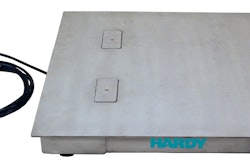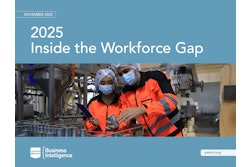While Brexit—Britain’s decision to leave the European Union—will not be finalized this year, the move has OEMs, whose sales are exposed to the Euro, questioning how the decision will undermine the economic alliances that are fundamental to them.
Connor Lokar, economic consultant at ITR Economics, an economic research and consulting firm, says Brexit is mostly a European issue, for now. But there will be consequences for heavy machinery and industrial manufacturers—similar to packaging and processing OEMs—starting with the strong American dollar, a familiar pressure for U.S. manufacturers.
In the weeks following Brexit, the British pound was down more than 7 percent against the euro, dropping to a 31-year low. The weak pound and strong dollar will pressure U.S. manufacturers and exporters as they face cheaper, foreign manufactured goods relative to more expensive manufactured goods in the U.S.
“Fortunately, facing pressure from a foreign competitor that is operating with much weaker currency than the American dollar is not a unusual phenomenon,” Lokar says. “U.S. manufacturers have been feeling this stress for more than a year and half now, and it wont likely be their undoing, but it will be another negative they will have to deal with in the immediate future.”
Though the effects and adjustments to Brexit may be short term for heavy machinery manufacturers, Lokar says durable goods manufacturers, may take a harder hit as Britain’s departure from the European Union could upend exchange rates.
“If there is legitimate concern for anyone as far as exchange rates, it is for the durable goods manufacturers,” Lokar says. “Industrial manufacturers and those who manufacture bigger machinery items are the ones that were pinched the hardest over the last six quarters. When we look at exports dropping and import activity kicking up, bigger machinery items are very responsive to these exchange rate swings.”
Currently, U.K. operators are carrying an exchange rate advantage, allowing them to sell equipment into the U.S. market at a more competitive price. Lokar says because the U.S. market is so stable with an abundance of consumers, OEMs producing machines for the consumer market could see an increase in foreign competition.
Aside from increased competition with foreign manufacturers, the ongoing effects of Brexit will impact metal prices and direct materials sourcing. Aluminum and steel prices will increase over the next six months and even more noticeably in 2017 with an increase in global demand, Lokar says.
“Aluminum prices harshly dipped two days after Brexit, but it’s up again, approaching a 60 day high and has surpassed where it was before the decision,” Lokar says. “Steel prices are on the upswing again and have held up, and copper has been reluctant to turn. We will see a rise in commodity prices in the second half of this year and will transcend around the end of 2016 and 2017 when we expect the U.S. economy to be accelerating and the Chinese economy to stabilize.”
Though Britain announced July 19 that it wouldn’t begin its separation from the European Union until 2017, at the earliest, Lokar urges OEMs to focus on how their company addresses the skills gap as a way to prepare for foreign competition and the pressures they will face as Brexit manifests.
“More skilled laborers are leaving the workforce now than those who are entering to keep the equilibrium that the manufacturing sector needs,” Lokar says. “Manufacturers need to look hard at what areas of technology or robotics they can pursue to engineer some labor out of the system to combat an extremely scarce labor pool and a rise in cost of labor per individual. OEMs need to keep themselves competitive by keeping costs down, especially when facing pressure from outside the U.S., as well as within the U.S. labor market.”






















